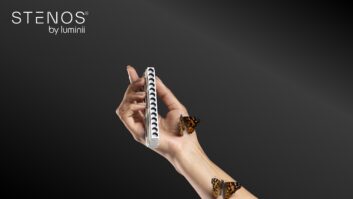TWICE:PMA reported that retail printing has reached parity with home printing. What are some of the dynamics at retail?
Lundeen: If you break it down by month, what you’ll fine is for the last six months retail has surpassed home printing significantly. Retail is winning out vs. the home, though our segmentation work says that many people are doing them all. In fact, I would call this upcoming season the era of comparison, where the consumer is out there trying everything. They’re trying online, they’re trying kiosks, and they’re trying home printing, photo specialty, online mail-back and so on. What they’re looking at is quality and they’re looking at price, and they’re looking a convenience. It’s the definition of convenience that gets kind of interesting in this printing space.
Carr: Actually, digital has really unleashed the power of the picture. Now the consumer doesn’t have to drop off the role of film and get a 4 by 6 print back. Now she can print at the kiosk, she can print greeting cards, she can send pictures online and have it delivered to the store, she can create photo books and calendars and mugs. The customer is really becoming much more in control.
The retailer that takes advantage of that is the one that’s going be very profitable. If the retailer is still just giving them 4 by 6’s, whether it’s at kiosk or behind the counter, they’re not going to be satisfying what she wants because she can go other places now and get it done.
Lee: I think we’re still at the early stage of all of this. I think that the customer is searching for the most comfortable way for them to do it, and I don’t know that it’s really shaken out completely yet. I think they’re a little overwhelmed right now — they’re still looking for the most convenient way, the most comfortable way.
Carr: The advantage to the retailer is that they’re the ones that can drive this behavior. The advantage is the profitability in those gifting items like a book for $69 dollars vs. a 4 by 6 for 10 cents.
Lundeen: The consumer believes that they get better quality at retail. I think the reason is that they have been using typical document printers at home and printing on ordinary paper. And so their frame of reference is that when they take images to retail, they get a higher quality print. For retailers there’s a tremendous opportunity to play to that. In the early days of photo finishing, you couldn’t make the claim of better quality than the guy down the street — they all had the same equipment. Now, there’s a comparison with home printers, so retail has a great opportunity.
Peck: I see a mix of use. We still see home printing as more than 60 percent, and we see it shifting downward and probably hitting around 45 percent within the next few years. And we certainly see retail increasing a little bit. Online is not increasing as quickly as we would have expected it to. But I see the typical customer as having a mix of habits.
If they went on vacation and shot 200 or 300 pictures, I don’t think they’re going to print all of those at home. They may still drop those off where it’s convenient and where it’s affordable to have them made at 16 or 19 cents per print. But I think to be creative, they may want to print the 8 by 10 at home. I agree that the retailer that can figure this out can capture the frames, can capture the photo albums and can capture the very profitable side of that business, because giving away prints at 14 or 19 cents by itself may not be a profitable proposition.
Lundeen: I think we’re in total agreement. I think it’s the era of comparison. I think the consumer is trying all six venues, and they’re doing it this season.
Peck: I do agree with you that consumers perceive home printing to have lesser quality and to be expensive and complicated and we need to overcome that.
Campbell: I think the other challenge is that consumers are taking a lot pictures and trying to figure what to do with them all. From our perspective, the more we can promote imaging in their lives the better. I think a lot of the pictures that are being taken right now aren’t going anywhere. So how do we as an industry encourage people to use these pictures and to make them more a part of their lifestyle on an everyday basis?
Peck: Well I think that goes back to the discussion we started about four years ago — How do you change the habit of people who are passing digital cameras around to show the family pictures when really what we’d like them to do is start printing those pictures.
We did a presentation at one of our meetings where one of our tech guys asked the question, “What‘s the safest way to store your photos digitally, hard drive, CD or DVD?” After explaining that none of these last forever, he answered: print it. It’s a print that will last a hundred years. So that’s what we need to change in the consumer’s mind. If you want to keep your cherished photos, print them out, don’t store them on a hard drive.
Hoffman: It comes back down to what you said earlier, it’s a convenience factor.
Carr: What Rich said is important. How does imaging fit into consumers’ lifestyle? A good example is our partnership with Martha Stewart. People love Martha Stewart and this is going to really drive more awareness with what you can do with your digital pictures.













